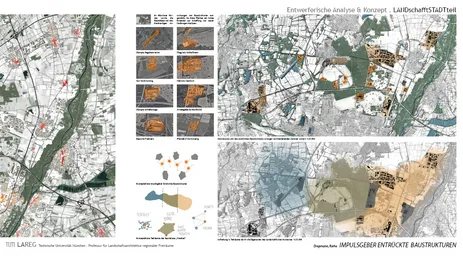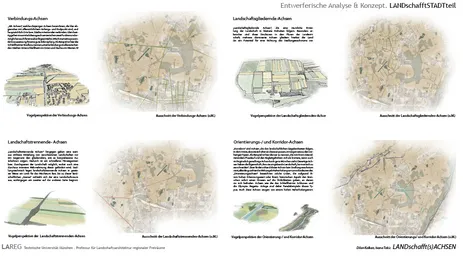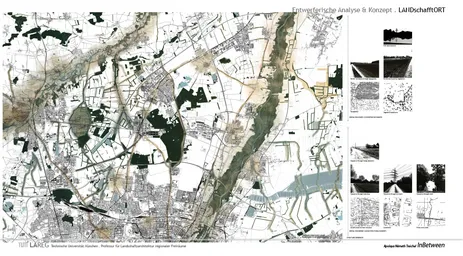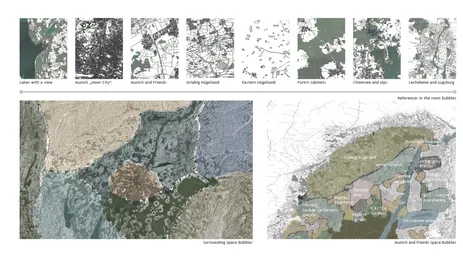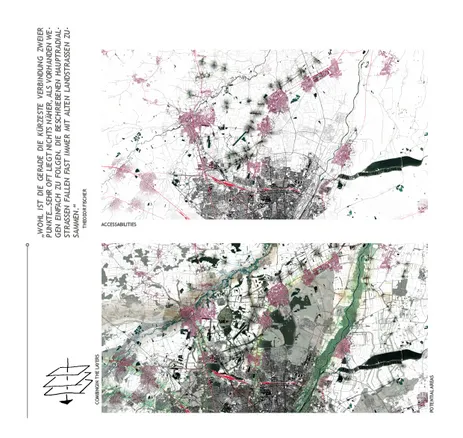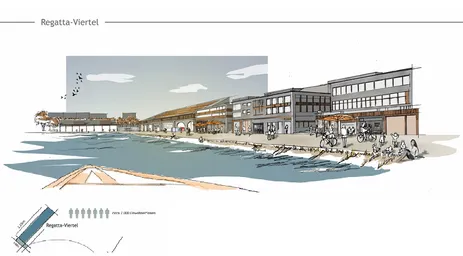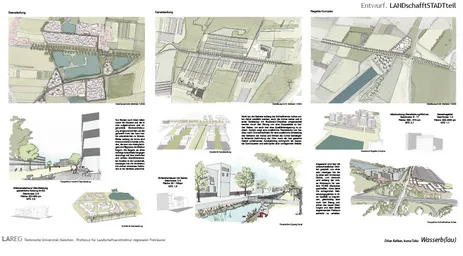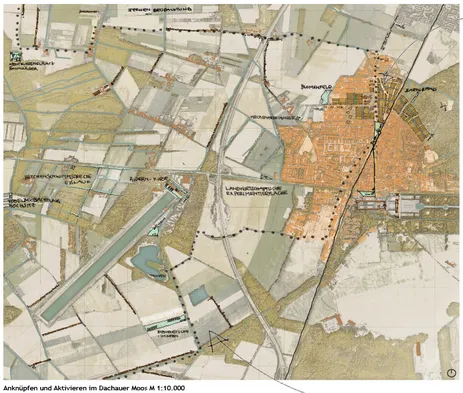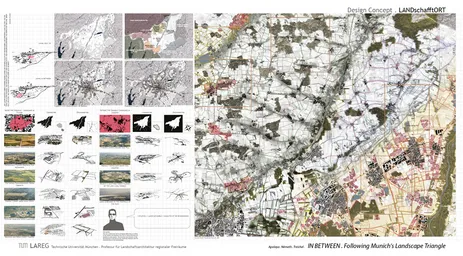Designbased analysis
In the designbased analysis of landscape structures, spatial characteristics, spatial coherences and spatial boundaries are described as landscape. The conceptual brainstorming in the research for new settlement structures relies on their potentials.
Design
In the phase of design, a regional landscape or a 'regional' topic is chosen for the landscape. Based on a spatial structure and shape, overarching designs are developed.
LANDschafftSTADTteil

The influx of around 300,000 people to Munich is prognosticated for the next two decades. In order to fulfil this demand, it is not sufficient to concentrate exclusively on densifying inner-city locations through redensification and "postage stamp development plans" (City Planning Councillor Elisabeth Merk). Accordingly, the last undeveloped sites on the outskirts of the city are becoming the focus of urban development.
A new urban neighbourhood for 25,000 people is currently being built in Freiham. Since 2011, intensive consideration has been given to the urban development of areas in the north-east of Munich near Daglfing (LASIE 2014), and since 2017 to the north of Munich around Feldmoching. A competition is currently in progress for the planning of the areas in the north-east. In Freiham, the city acquired plots of land over decades. When it comes to the potential development areas in the north-east and north of Munich there is not enough time. That is why in these two cases the city used the "urban development programme" (§165 BauGB) anchored in the building code. The paragraph serves to speed up the development of new areas in inner and outer areas if they are of particular importance for the general welfare of the implementing municipality. Associated with the paragraph are, for example, land price freezes, the municipality's right of first refusal and expropriations without a development plan.
In the case of the SEM Munich North, housing for around 20,000 people was to be built on an area of 900 ha between Karlsfeld, Ludwigsfeld, Feldmoching and Fasanerie- Nord.
In June 2018, the city withdrew from the Munich North Urban Development Scheme due to massive opposition from associations and citizens' initiatives. Many residents and property owners, but especially local farmers and horticultural farms, felt that the SEM would endanger their private property, their living environment, local food production, their own livelihoods, the rural character of Munich's environs, and thus a key facet of Munich's entire self-image.
Instead of the SEM Munich North, the city now plans to develop a cooperative urban development concept for a "moderate and thoughtful" development.
PROJECT.
In this year's studio project, we want to develop our own landscape architectural perspective on future landscape and settlement development in the north of Munich. The aim is to no longer view the north of Munich in a functionalist and centralist way as a periphery, surrounding area, fringe or green belt, but to understand it as a space full of character that has grown historically, allowing development while at the same time demanding open space. It remains to be decided whether the north of Munich should be developed according to a model of villages in the open countryside that have grown up in it but have been reinterpreted in urban terms, or that of a new district of Munich (figure-ground relationship). In order not to continue to stick faceless new quarters to devalued village relics, to cut up the landscape with bypasses and noise barriers, the qualities of the European cultural landscapes (European Landscape Convention) should become the structural elements of the future urban-open space texture.

